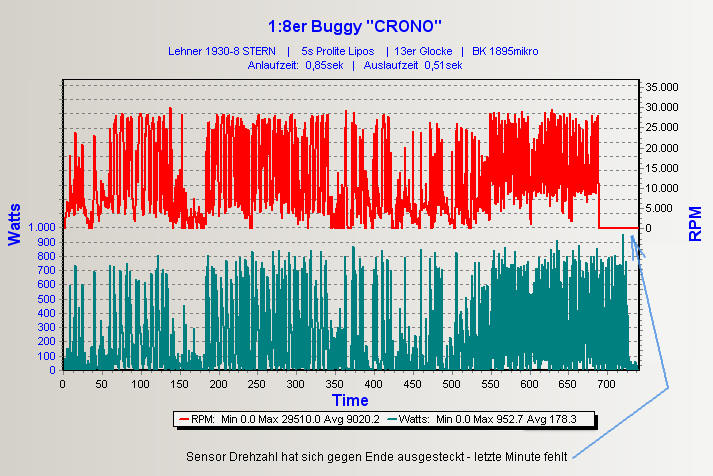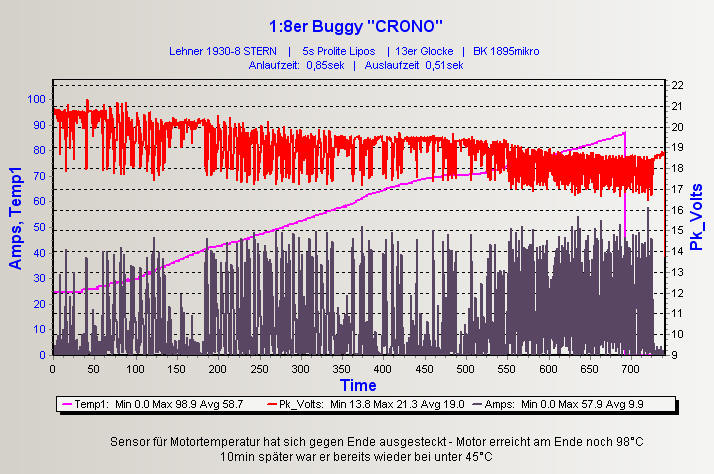offtopic the second:
here just some real-world data of a motor i use myself and have measured myself:
its a Lehner 1930-8 in star-configuration
230g light
36mm motordiameter
56mm long
i think this motor may maybe fit into the sparc
here the data i measured myself within an rc-offroad buggy (~ 3,3kg heavy)


you can see:
peaks around 50A
voltage: it was a 400g light 5s Lipo used
rpms: up to 30.000rpm
Watt: up to 950Watt peak, average was 180Watt
not that bad for such a small motor, its enough to outperforme the nitro-buggies at our field
so i think this motor should work ok in the sparc.. maybe too fast spinning ?
but there are 30 other windings available for that motor
here just some real-world data of a motor i use myself and have measured myself:
its a Lehner 1930-8 in star-configuration
230g light
36mm motordiameter
56mm long
i think this motor may maybe fit into the sparc
here the data i measured myself within an rc-offroad buggy (~ 3,3kg heavy)


you can see:
peaks around 50A
voltage: it was a 400g light 5s Lipo used
rpms: up to 30.000rpm
Watt: up to 950Watt peak, average was 180Watt
not that bad for such a small motor, its enough to outperforme the nitro-buggies at our field
so i think this motor should work ok in the sparc.. maybe too fast spinning ?
but there are 30 other windings available for that motor
Last edited:







